How to Practice Nonviolent Communication
Method 1 of 3:
Practicing NVC
-
 State the observations that are leading you to feel the need to say something. These should be purely factual observations, with no component of judgment or evaluation. People often disagree about evaluations because they value things differently, but directly observable facts provide a common ground for communication. For example,
State the observations that are leading you to feel the need to say something. These should be purely factual observations, with no component of judgment or evaluation. People often disagree about evaluations because they value things differently, but directly observable facts provide a common ground for communication. For example,- "It's 2:00 a.m. and I hear your stereo playing" states an observed fact, while "It's way too late to be making such an awful racket" makes an evaluation.
- "I just looked in the refrigerator and saw that there's no food, and I'm thinking that you didn't go grocery shopping" states an observed fact (with an inference explicitly stated), while "You wasted the whole day" makes an evaluation.
-
 State the feeling that the observation is triggering in you. Or, guess what the other person is feeling, and ask. Naming the emotion, without moral judgment, enables you to connect in a spirit of mutual respect and cooperation. Perform this step with the aim of accurately identifying the feeling that you or the other person are experiencing in that moment, not with the aim of shaming them for their feeling or otherwise trying to prevent them from feeling as they do. Feelings are sometimes hard to put into words.[2]
State the feeling that the observation is triggering in you. Or, guess what the other person is feeling, and ask. Naming the emotion, without moral judgment, enables you to connect in a spirit of mutual respect and cooperation. Perform this step with the aim of accurately identifying the feeling that you or the other person are experiencing in that moment, not with the aim of shaming them for their feeling or otherwise trying to prevent them from feeling as they do. Feelings are sometimes hard to put into words.[2]- For example, "There's half an hour to go before the show starts, and I see that you're pacing (observation). Are you nervous?"
- "I see your dog running around without a leash and barking (observation). I'm scared."
-
 State the need that is the cause of that feeling. Or, guess the need that caused the feeling in the other person, and ask. When our needs are met, we have happy, pleasant feelings; when they are not met, we have unpleasant feelings. By tuning into the feeling, you can often find the underlying need. Stating the need, without morally judging it, gives you both clarity about what is alive in you or the other person in that moment.
State the need that is the cause of that feeling. Or, guess the need that caused the feeling in the other person, and ask. When our needs are met, we have happy, pleasant feelings; when they are not met, we have unpleasant feelings. By tuning into the feeling, you can often find the underlying need. Stating the need, without morally judging it, gives you both clarity about what is alive in you or the other person in that moment.- For example, "I see you looking away while I'm talking, and you've been speaking so quietly, I can't hear you (observation). Please speak up so I can understand.
- "I'm feeling uncomfortable (feeling) because I'm needing connection right now. Is now a good time to hang out?"
- "I saw that your name wasn't mentioned in the acknowledgments. Are you feeling resentful because you're not getting the appreciation you need?"
- Note that "needs" have a special meaning in NVC: they are common to all people and not tied to any particular circumstance or strategy for fulfilling them. So, wanting to go to a movie with someone is not a need and a desire to spend time with a specific person is not a need. The need in that case might be companionship. You can meet your need for companionship in many ways, not just with that specific person and not just by going to a movie.[3]
-
 Make a concrete request for action to meet the need just identified. Ask clearly and specifically for what you want right now, rather than hinting or stating only what you don't want. For the request to really be a request—and not a demand—allow the other person to say no or propose an alternative. You take responsibility for getting your own needs met, and you let them take responsibility for theirs.
Make a concrete request for action to meet the need just identified. Ask clearly and specifically for what you want right now, rather than hinting or stating only what you don't want. For the request to really be a request—and not a demand—allow the other person to say no or propose an alternative. You take responsibility for getting your own needs met, and you let them take responsibility for theirs.- "I notice that you haven't spoken in the last ten minutes (observation). Are you feeling bored? (feeling)" If the answer is yes, you might bring up your own feeling and propose an action: "Well, I'm bored, too. Hey, how would you like to go to the Exploratorium?" or perhaps, "I'm finding these people really interesting to talk with. How about we meet up in an hour when I'm done here?"
Method 2 of 3:
Handling Boundaries
Nonviolent Communication is an idealized style of communication, and it will not work in every single situation. Here is how to do it well, and recognize when a more direct, assertive communication style is necessary.
-
 Make sure a person is open to nonviolent communication. NVC uses a type of emotional intimacy that not all people are comfortable with all the time, and they have the right to set boundaries. If someone is not open to expressing their feelings, do not push or manipulate them into doing so.
Make sure a person is open to nonviolent communication. NVC uses a type of emotional intimacy that not all people are comfortable with all the time, and they have the right to set boundaries. If someone is not open to expressing their feelings, do not push or manipulate them into doing so.- Do not start psychoanalyzing someone without their consent.[4][5]
- If at any time someone no longer wants to talk about their feelings, they have the right to do so and can leave the conversation.
- People with intellectual and developmental disabilities, especially when stressed, may have trouble speaking in and interpreting NVC style. If this is the case, use clear and direct communication.
-
 Recognize that no one is responsible for someone else's feelings. You are not required to change your actions just because someone else doesn't like them. If someone is asking you to bend over backwards or ignore your own wants and needs, you are allowed to say no.
Recognize that no one is responsible for someone else's feelings. You are not required to change your actions just because someone else doesn't like them. If someone is asking you to bend over backwards or ignore your own wants and needs, you are allowed to say no.- If someone is behaving aggressively, you can ask yourself what they need. However, this can be emotionally draining work, and it is okay to walk away and say "their negativity is not my problem."
- People are not obligated to cater to your feelings. If someone says no to your request, avoid getting angry or guilt-tripping them.
-
 Be aware that nonviolent communication can be abused. People may use NVC to hurt others, and it is important to be able to recognize when this happens. Sometimes you don't need to meet someone's "needs." It's important to remember that tone is less important than what the person has to say, and some feelings should not be shared.
Be aware that nonviolent communication can be abused. People may use NVC to hurt others, and it is important to be able to recognize when this happens. Sometimes you don't need to meet someone's "needs." It's important to remember that tone is less important than what the person has to say, and some feelings should not be shared.- Abusers can use NVC to control others. For example, "I feel disrespected when you don't check in with me every 15 minutes."
- Criticism of tone can be used to derail a conversation about someone's needs (e.g. "I feel hurt when you say you're upset with me" or "I feel attacked when you use that tone"). People have a right to be heard, even if they can't say things in a way that will please everyone.
- No one should be forced to listen to deeply negative feelings about them. For example, it is not appropriate for a parent to tell their autistic child how horrible it is to put up with them, or for someone to tell a Muslim that they feel all Muslims should be deported. Some ways of expressing feelings can be abusive.
-
 Recognize that some people may not care about your feelings. Saying "I feel humiliated when you make fun of me in front of my peers" isn't going to do anything if the other person doesn't care how you feel. Nonviolent communication can work wonders when people are accidentally hurting each other, but not when it is done on purpose, or when one party doesn't care whether they are hurting someone or not. In these cases, it's better to be clear by saying "stop it," "leave me alone," or "that hurts."
Recognize that some people may not care about your feelings. Saying "I feel humiliated when you make fun of me in front of my peers" isn't going to do anything if the other person doesn't care how you feel. Nonviolent communication can work wonders when people are accidentally hurting each other, but not when it is done on purpose, or when one party doesn't care whether they are hurting someone or not. In these cases, it's better to be clear by saying "stop it," "leave me alone," or "that hurts."- Sometimes, if someone is upset with you, it isn't because you are doing something wrong. If one person is attacking another, both sides are not equally valid.
- Placing value judgments like "she is being mean" or "this is unfair and not my fault" is sometimes necessary, especially for abuse victims, oppressed people, bullying victims, and other people who need to protect themselves from others.
Method 3 of 3:
Communicating Well
-
 Decide upon the solution together, if possible. When you do something together, you want it to be because you both voluntarily consent to it, as a way of fulfilling your own genuine needs and desires, not out of guilt or pressure. Sometimes you can find an action that meets both your needs, and sometimes you just have to amiably go your separate ways.
Decide upon the solution together, if possible. When you do something together, you want it to be because you both voluntarily consent to it, as a way of fulfilling your own genuine needs and desires, not out of guilt or pressure. Sometimes you can find an action that meets both your needs, and sometimes you just have to amiably go your separate ways.- If you're not ready to ask in this spirit, maybe you need more time, or more empathy. Or perhaps your instincts are telling you that this person does not care about your feelings. Reflect on what is stopping you.
-
 Listen closely to what the other person says. Don't assume that you know how they feel or what is best for them. Instead, let them express their thoughts and feelings. Validate their feelings, slow down to ensure they feel heard, and make it clear that you care.
Listen closely to what the other person says. Don't assume that you know how they feel or what is best for them. Instead, let them express their thoughts and feelings. Validate their feelings, slow down to ensure they feel heard, and make it clear that you care.- If you spend too much time labeling their needs, they might feel like you are trying to play therapist instead of actually hearing what they have to say. Put the focus on what they are telling you, not on what you have decided they "actually" mean.
-
 Take a break if one or both parties are too stressed to handle the conversation. If you're getting too upset to speak thoughtfully and clearly, the other person is unwilling to talk openly, or either one of you wants to end the conversation, stop. You can have it at a better time, when both parties are willing and able.
Take a break if one or both parties are too stressed to handle the conversation. If you're getting too upset to speak thoughtfully and clearly, the other person is unwilling to talk openly, or either one of you wants to end the conversation, stop. You can have it at a better time, when both parties are willing and able.- If conversations consistently end badly with someone, take a close look at the situation, because there may be a deeper problem.
5 ★ | 1 Vote
You should read it
- The more messaging, the more sustainable the relationship is.
- 11 signs to let you know that person is trying to hide his feelings
- What to do to get rid of the feeling of 'sunstroke' a third person?
- 7 Ways to End when Feeling Unappreciated
- How to hold hands with that person reveals exactly the relationship of the two
- 3 simple ways to help you easily talk to employers during the interview
- How to download and play Among Us first person fps
- How to Be Considerate on Public Transport
May be interested
- 10 simple ways to improve your communication skills?
 a good conversation is like a short dress: short - enough to be interesting, but long enough to cover topics. this article will give you 10 simple ways to get such a conversation.
a good conversation is like a short dress: short - enough to be interesting, but long enough to cover topics. this article will give you 10 simple ways to get such a conversation. - 7 ways to practice unconditional love you need to know
 if you are someone who has never been unconditionally loved, then getting and giving that love to someone else can be quite difficult. however, the following article will reveal to you 7 ways to practice unconditional love to change your life. invite you to consult!
if you are someone who has never been unconditionally loved, then getting and giving that love to someone else can be quite difficult. however, the following article will reveal to you 7 ways to practice unconditional love to change your life. invite you to consult! - How to Develop Good Communication Skills
 having good communication skills is important. they can help you with presentations in class, during job interviews, when handling arguments, and in a variety of other situations. fortunately, there are some tricks you can use to improve...
having good communication skills is important. they can help you with presentations in class, during job interviews, when handling arguments, and in a variety of other situations. fortunately, there are some tricks you can use to improve... - Don't tell your boss these things if you don't want to 'out' soon
 conflicts between managers and employees are not new and always appear in any public office. if you want to quit early, then never say anything to say this to your boss.
conflicts between managers and employees are not new and always appear in any public office. if you want to quit early, then never say anything to say this to your boss. - Practice typing 10 fingers, typing fast with Mario Teaches Typing game
 practice typing 10 fingers or practicing typing fast with long text pages, meaningless words are boring. with mario teaches typing your quick typing practice will be much more interesting. let's find out how this game will help improve typing speed.
practice typing 10 fingers or practicing typing fast with long text pages, meaningless words are boring. with mario teaches typing your quick typing practice will be much more interesting. let's find out how this game will help improve typing speed. - Never say these 11 sentences in front of your boss if you don't want to be fired
 sometimes speaking straight is not a good thing, especially in a workplace environment.
sometimes speaking straight is not a good thing, especially in a workplace environment. - Microsoft Forefront TMG - Best Practice Analyzer
 in this article we will show you how to install and use forefront tmg best practice analyzer (tmgbpa).
in this article we will show you how to install and use forefront tmg best practice analyzer (tmgbpa). - Top 5 best typing practice software for kids
 top 5 best typing practice software for kids. in the age of technological development today, it is important to form children's habits and initial skills.
top 5 best typing practice software for kids. in the age of technological development today, it is important to form children's habits and initial skills. - TOP game websites that teach children to type on the computer
 technology is developing day by day and it is essential for children to know how to use computers from an early age. computer skills become more essential, so parents also begin to pay attention to letting their children practice this skill.
technology is developing day by day and it is essential for children to know how to use computers from an early age. computer skills become more essential, so parents also begin to pay attention to letting their children practice this skill. - Typing with 10 fingers, practice typing with 10 fingers quickly
 practice typing with 10 fingers according to tipsmake's instructions below, you will get familiar with the letter surface on the keyboard, at the same time know how to use your fingers and practice typing with 10 fingers on the keyboard appropriately, improving your efficiency. data entry capacity. if you often write documents, learning how to type with 10 fingers is essential.
practice typing with 10 fingers according to tipsmake's instructions below, you will get familiar with the letter surface on the keyboard, at the same time know how to use your fingers and practice typing with 10 fingers on the keyboard appropriately, improving your efficiency. data entry capacity. if you often write documents, learning how to type with 10 fingers is essential.
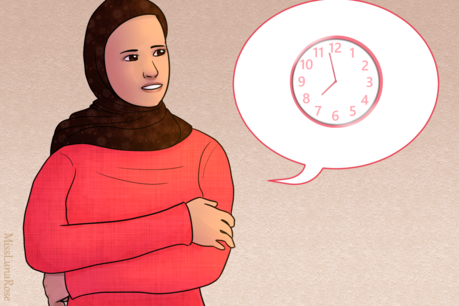
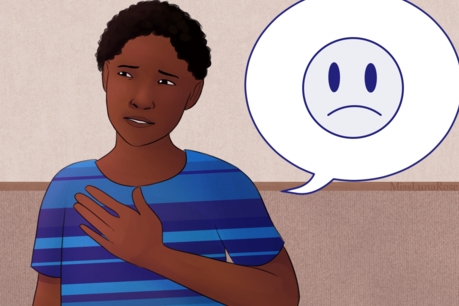

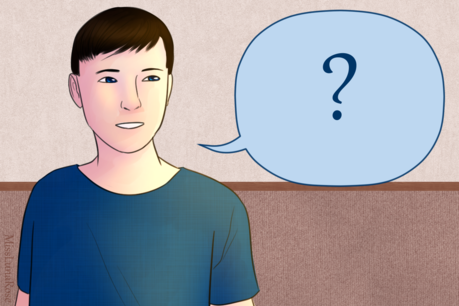
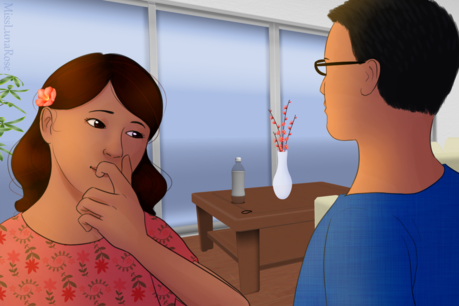
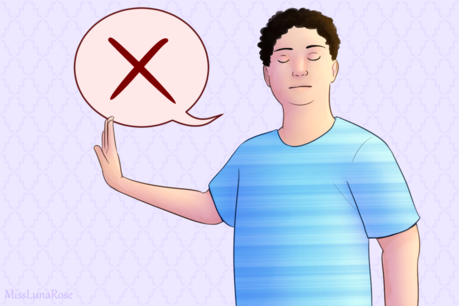


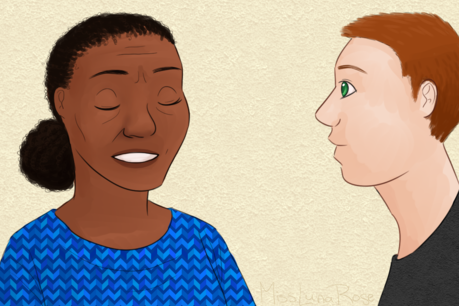












 How to Communicate Effectively
How to Communicate Effectively How to Transfer from a Community College to a University
How to Transfer from a Community College to a University How to Succeed in College with Young Children
How to Succeed in College with Young Children How to Transition from High School to College
How to Transition from High School to College How to Apply to University of Toronto
How to Apply to University of Toronto How to Return to School in Your Fifties
How to Return to School in Your Fifties